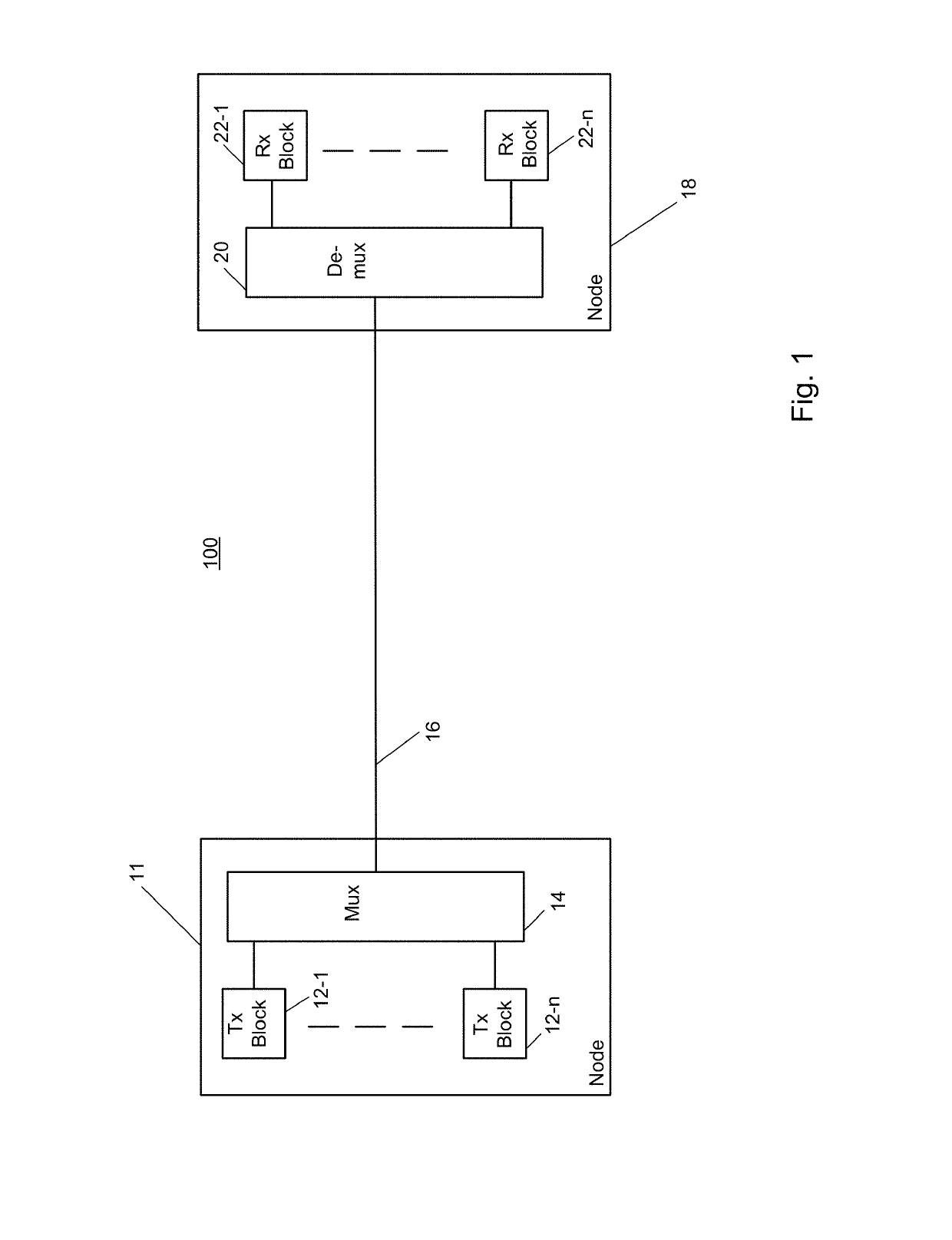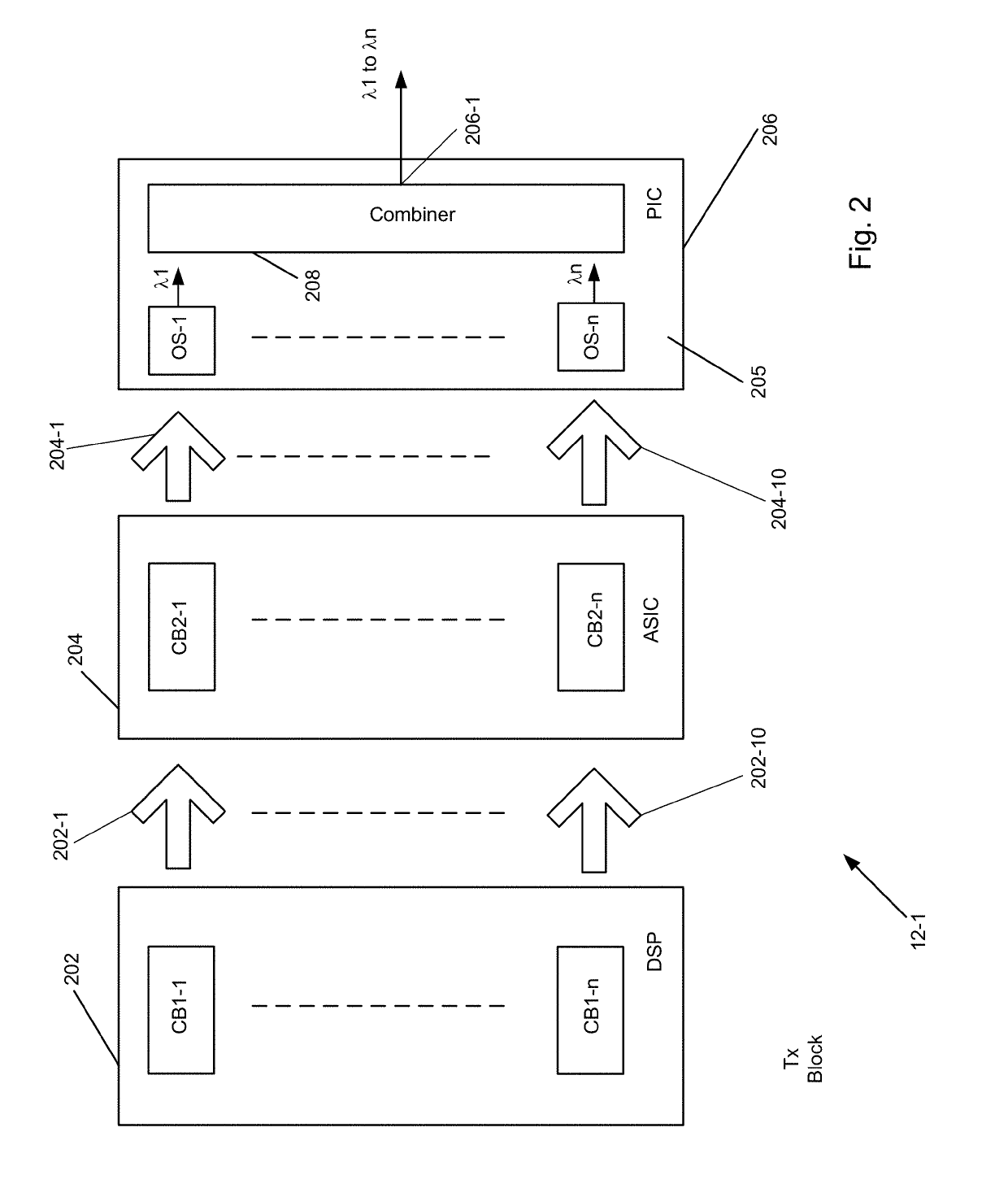Distribution matching for probabilistic constellation shaping with an arbitrary input/output alphabet
a probabilistic constellation and alphabet technology, applied in the field of distribution matching for probabilistic constellation shaping with an arbitrary input/output alphabet, can solve the problems of univariate gaussian probability distribution, inability to achieve optimal se with standard modulation formats, and each of these techniques, however, suffer from the disadvantages described
- Summary
- Abstract
- Description
- Claims
- Application Information
AI Technical Summary
Benefits of technology
Problems solved by technology
Method used
Image
Examples
Embodiment Construction
[0051]Consistent with the present disclosure, an encoder circuit is provided at a transmit side of an optical fiber link that maps an input sequence of bits of fixed length k to a sequence of symbols of a codeword of length n, such that the symbols of the codeword define a predetermined transmission probability distribution. Preferably, a fixed-point precision process in which, based on a fixed-point representation of the input bit sequence, each symbol of the codeword is generated during a corresponding clock cycle, such that after n clock cycles, a complete codeword corresponding to the input bit sequence is output. On a receive end of the link, a decoder is provided that outputs the k-bit sequence every n clock cycles based on a fixed-point representation of the codeword. Accordingly, buffers need not be provided at the output of the encoder and the input of the decoder, such that processing of the input sequence, codewords, and output sequence may be achieved efficiently without...
PUM
 Login to View More
Login to View More Abstract
Description
Claims
Application Information
 Login to View More
Login to View More - R&D
- Intellectual Property
- Life Sciences
- Materials
- Tech Scout
- Unparalleled Data Quality
- Higher Quality Content
- 60% Fewer Hallucinations
Browse by: Latest US Patents, China's latest patents, Technical Efficacy Thesaurus, Application Domain, Technology Topic, Popular Technical Reports.
© 2025 PatSnap. All rights reserved.Legal|Privacy policy|Modern Slavery Act Transparency Statement|Sitemap|About US| Contact US: help@patsnap.com



